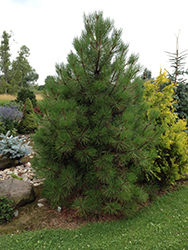Fri & Sat 8am - 8pm
Sun 8am - 7pm
Anytown, USA 12345
fax: 261.787.0463
e-mail: info@successgc.com


Plant Finder

Height: 80 feet
Spread: 30 feet
Sunlight:
![]()
Hardiness Zone: 5a
Other Names: Pinus ponderosa var. washoensis
Description:
A tall and imposing evergreen tree, with a straight, cylindrical trunk and pyramidal crown; large, ascending, slightly twisted needles are gray-green; tolerant of adverse conditions, makes a great windbreak; needs full sun
Ornamental Features
Washoe Pine is primarily valued in the landscape for its distinctively pyramidal habit of growth. It has grayish green evergreen foliage. The needles remain grayish green throughout the winter. The shaggy brick red bark adds an interesting dimension to the landscape.
Landscape Attributes
Washoe Pine is an evergreen tree with a strong central leader and a distinctive and refined pyramidal form. Its relatively coarse texture can be used to stand it apart from other landscape plants with finer foliage.
This tree will require occasional maintenance and upkeep. When pruning is necessary, it is recommended to only trim back the new growth of the current season, other than to remove any dieback. It is a good choice for attracting birds and squirrels to your yard. Gardeners should be aware of the following characteristic(s) that may warrant special consideration;
- Disease
Washoe Pine is recommended for the following landscape applications;
- Accent
- Shade
- Windbreaks and Shelterbelts
Planting & Growing
Washoe Pine will grow to be about 80 feet tall at maturity, with a spread of 30 feet. It has a high canopy of foliage that sits well above the ground, and should not be planted underneath power lines. As it matures, the lower branches of this tree can be strategically removed to create a high enough canopy to support unobstructed human traffic underneath. It grows at a medium rate, and under ideal conditions can be expected to live to a ripe old age of 100 years or more; think of this as a heritage tree for future generations!
This tree should only be grown in full sunlight. It prefers dry to average moisture levels with very well-drained soil, and will often die in standing water. It is considered to be drought-tolerant, and thus makes an ideal choice for xeriscaping or the moisture-conserving landscape. It is not particular as to soil type or pH, and is able to handle environmental salt. It is quite intolerant of urban pollution, therefore inner city or urban streetside plantings are best avoided. This species is native to parts of North America.
